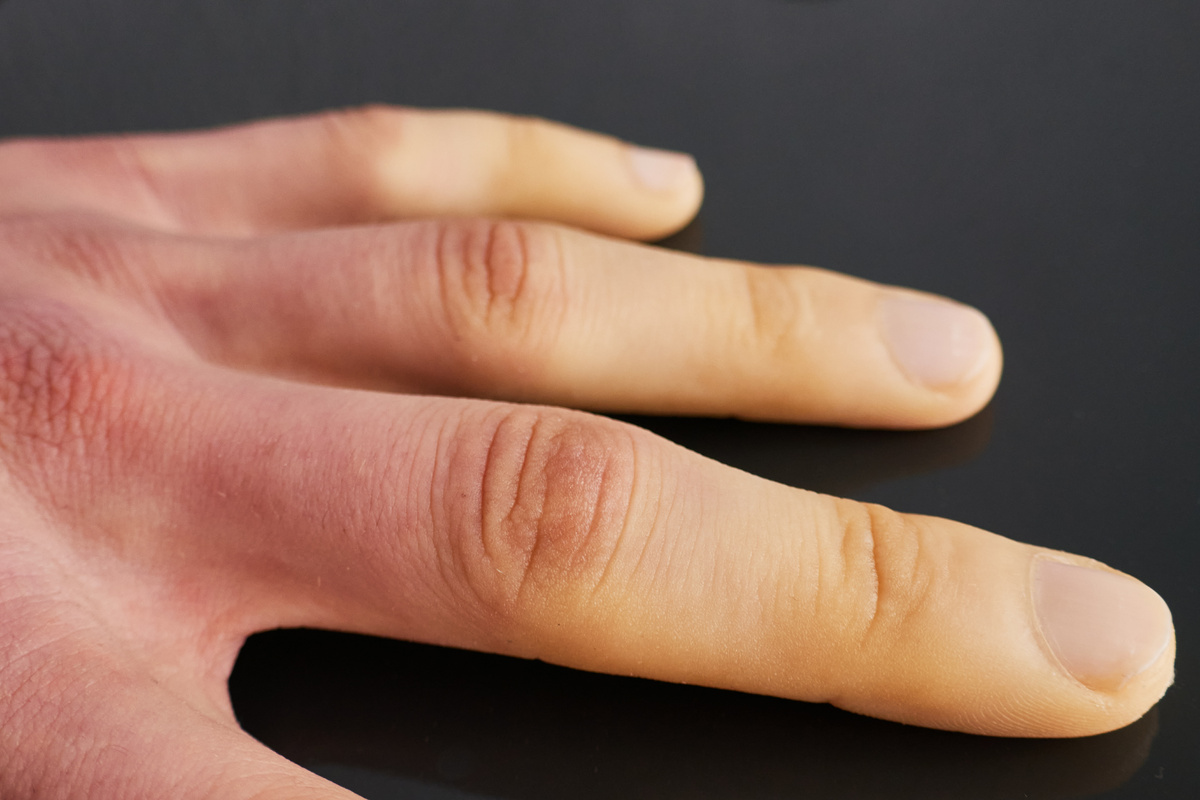What is poor circulation?
Poor circulation is a reduction of blood flow around the body. It happens when the circulatory system is unable to pump blood around the body effectively.
Blood circulation is vital for the delivery of the oxygen and nutrients the body needs. When a person has poor circulation, there is a drop in the delivery of blood – and consequently oxygen and nutrients – around the body. Poor circulation typically affects the outermost parts of the body such as the hands and feet.
Poor circulation symptoms
If you have poor circulation, you may not always have obvious symptoms. Common signs of poor circulation may include:
- numbness, weakness and swelling in the furthest extremities of the body – such as the hands and feet
- cramps – in the leg and hip muscles when you exercise, improving with rest
- tiredness and feeling cold – poor circulation can leave the body lacking the fuel it needs for energy and warmth
- varicose veins – due to the weakening of venous valves, resulting in blue- or purple-coloured veins around the ankles and feet
- weak immune system – as the circulation of the antibodies that fight infection has slowed down
- poor cognitive function – because the brain needs blood flow to function, poor circulation can lead to memory and concentration problems
- erectile dysfunction – insufficient blood flow can make it harder for men to get an erection
- hair loss – due to insufficient nutrition
- weak nails – due to insufficient nutrition
- constipation – a reduced blood flow can slow down digestive processes
- angina – a pain and tightness in the chest caused by restricted blood flow to the heart muscles

Poor circulation can lead to numbness and weakness in the hands and feet.
What causes poor circulation?
There are various conditions and lifestyle choices which can contribute to bad circulation. These include:
- high blood pressure – this can weaken the blood vessel walls and restrict blood flow
- diabetes – too much glucose in the blood is bad for your blood vessels
- atherosclerosis – when plaque builds up inside the arteries, restricting blood flow
- deep vein thrombosis – when a blood clot develops in your leg, reducing blood flow
- varicose veins – damaged vein walls and valves can disrupt blood flow
- peripheral artery disease (PAD) – when plaque in the peripheral arteries stops blood from reaching the legs and feet
- pulmonary embolism – if a blood clot in a leg breaks off and travels to the lungs, blocking blood delivery to the lungs
- raynaud’s disease – if you have this condition, the blood vessels in your fingers and toes will get narrower when you are cold or stressed
- obesity – being obese can put you at a higher risk of medical problems that may slow blood flow, including high blood pressure, diabetes and high cholesterol
Complications of poor circulation
You should get your circulation and blood pressure checked regularly. If poor circulation is left untreated, it can lead to complications such as:
- stroke, when the blood supply to the brain is blocked or when a blood vessel bursts in the brain
- heart failure, when the heart can’t pump blood properly
- blood clots
- infected ulcers or wounds, because healing takes longer with poor circulation
- slower recovery from illnesses
Don’t ignore signs and symptoms which may indicate poor circulation. If you are concerned about symptoms such as numbness, weakness and swelling in your hands and feet, cramps, or varicose veins, get in touch with our team.
Poor circulation diagnosis
At the initial stage, your doctor will examine you, ask questions about your symptoms and review your medical history.
In order to investigate the issue further and make a diagnosis, there are several diagnostic tests which may be ordered. These may include:
- ultrasound
- angiography
- CT scan
- blood test
- stress test
- segmental Doppler pressure testing
- ankle-brachial index (ABI) test
Ultrasound for poor circulation
An ultrasound test produces images with sound waves and can estimate the blood flow through the blood vessels.
Angiography for poor circulation
Angiography is a type of X-ray which examines your blood vessels, detecting problems with blood flow.
Computed tomography (CT) scan for poor circulation
A CT scan is a diagnostic imaging technique that uses a series of X-rays to produce cross-sectional images of your blood vessels.
Blood test for poor circulation
A blood test may be issued to check for high levels of D-dimer, a protein your body creates to break down blood clots.
Stress test for poor circulation
A stress test analyses a patient’s heart whilst they perform light exercise – such as walking on a treadmill or riding an exercise bike – to check for signs of inadequate blood flow.
Segmental Doppler pressure testing for poor circulation
Segmental Doppler pressure testing (SDPT) is a type of ultrasound that measures the blood pressure at certain points in your arm or leg.
Ankle-brachial index (ABI) test
An ankle-brachial index is a simple test that compares the blood pressure in your upper and lower limbs. The results are then calculated to get the ABI by dividing the blood pressure in an arm artery by the blood pressure in an ankle artery.
Poor circulation treatment
The heart treatment(s) that you are recommended for poor circulation will depend on the cause of the condition. As a starting point, you can make some lifestyle changes that will help.
Lifestyle changes for poor circulation
Making the following lifestyle changes can improve your blood circulation, give you a healthier cardiovascular system, and even boost your immune system:
- stopping smoking
- regularly exercising
- losing weight
- sticking to a healthy diet
- managing stress
Medication for poor circulation
Medications and other non-surgical treatments for poor circulation include:
- blood thinners – including antiplatelet drugs that prevent the body from making blood clots
- clot dissolvers – used for serious conditions such as pulmonary embolism
- alpha blockers – a blood pressure medication that prevents tightening of the veins
- calcium channel blockers – to lower blood pressure
- insulin – to prevent diabetes complications
- statins – can lower mortality in people with PAD
- supplements – such as vitamin E, antioxidants and multi-minerals
- compression socks – to treat swollen or painful legs
Surgery for poor circulation
- angioplasty – this method uses a balloon to open up and stretch blocked arteries
- blood clot removal – also known as a thrombectomy, a minimally invasive method which inserts a catheter through a small incision, guided by X-ray, to remove a blood clot
- vena cava filter – this type of treatment is used to stop blood clots from reaching the lungs
Locations
Explore our team of vascular surgery specialists
Meet our team specialising in poor circulation. Whether it’s maintaining vascular health or implementing innovative interventions, our experts are here to offer personalised care tailored just for you.
